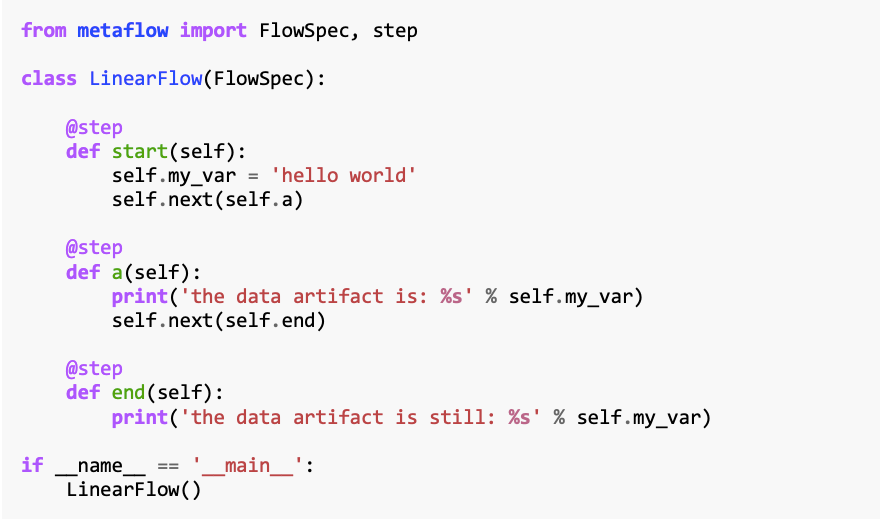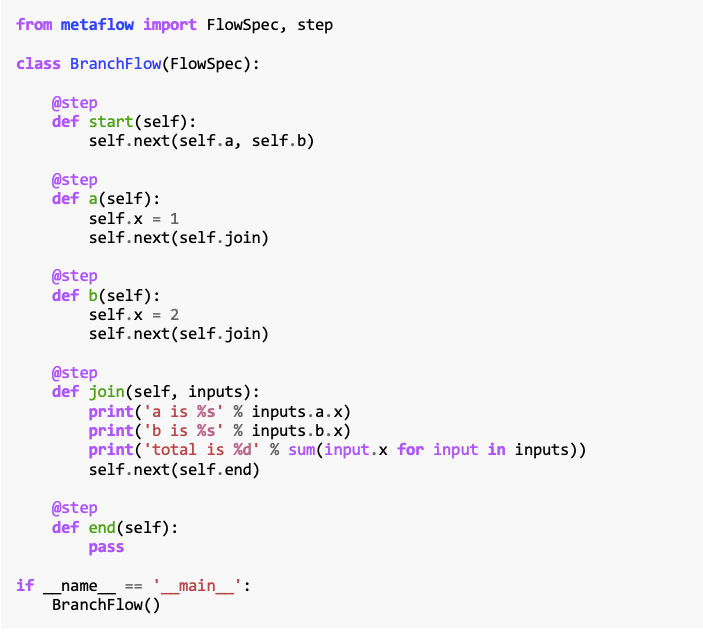
As data science continues to evolve, new tools and technologies are being developed to help individuals and organizations streamline their workflows, improve efficiency, and drive better results. One of the most powerful and innovative tools in this space is Metaflow, a Python library that makes it easy to build and manage data science workflows. In this comprehensive guide, we’ll explain how Metaflow works to help you unlock its potential to streamline your data science workflow.
What Is Metaflow?
Metaflow is an open-source Python library developed by Netflix to help data scientists build and manage machine learning operations (MLOps) workflows with ease. It provides a simple, intuitive interface for defining, executing, and organizing complex data science pipelines and training machine learning models. Metaflow’s primary goal is to improve the productivity of data scientists by automating many of the mundane tasks involved in building, deploying, and scaling data science projects.
The initial version of Metaflow was developed in 2017, and after extensive internal use and testing, it was open-sourced in 2019. Since then, it has gained significant traction in the data science community and become a popular choice for managing data science workflows.
Key Features of Metaflow
Intuitive Syntax for Defining Workflows
Metaflow uses a simple, intuitive syntax for defining data science workflows, making it easy for data scientists to get started with the library. Workflows are defined using Python decorators, which allow you to easily express complex pipelines with minimal code.
Built-in Data Versioning
One of the challenges of working with data science workflows is managing the different versions of data that are generated during the course of a project. Metaflow simplifies this process by providing built-in data versioning, allowing you to easily track and manage different versions of your data and models.
Automatic Checkpointing
Metaflow automatically creates data checkpoints at every step of the workflow, ensuring that you can easily recover from failures and resume your work from where you left off. This not only saves time but also helps prevent data loss and ensures the reproducibility of your results.
Parallelism and Distributed Computing
Metaflow makes it easy to parallelize your workflows and take advantage of distributed computing resources. With just a few lines of code, you can scale your workflows to run on multiple cores, multiple machines, or even in the cloud, without having to worry about the underlying infrastructure.
Integration with Cloud Services
Metaflow is designed to work seamlessly with popular cloud services like AWS, allowing you to easily deploy your workflows in the cloud and take advantage of cloud-based storage and compute resources. This makes it easy to scale your workflows and collaborate with team members across different locations.
Use Cases and Applications of Metaflow
Metaflow’s powerful features and flexibility make it an ideal choice for a wide range of data science use cases and applications:
Rapid Prototyping and Experimentation
Metaflow’s intuitive syntax and ease of use make it an ideal tool for rapid prototyping and experimentation. You can quickly define and iterate on your workflows, testing out different approaches and refining your models without having to worry about the underlying infrastructure.
Collaborative Data Science Projects
Metaflow’s built-in data versioning and integration with cloud services make it an excellent choice for collaborative data science projects. Team members can easily share and access different versions of data and models, ensuring that everyone is working with the most up-to-date information.
Large-Scale Data Processing
With its support for parallelism and distributed computing, Metaflow is well-suited for large-scale data processing tasks. Whether you’re preprocessing data, training machine learning models, or performing complex simulations, Metaflow can help you scale your workflows and take advantage of powerful computing resources to get the job done faster.
Productionizing Data Science Workflows
Metaflow’s robust features and support for cloud deployment make it an ideal choice for productionizing your data science workflows. You can easily deploy your workflows in the cloud, monitor their performance, and implement safety measures like explainable AI, and scale them as needed to meet the demands of your organization.
Metaflow Tutorial
Metaflow, a Python package for macOS and Linux systems, is designed to facilitate machine learning and data processing pipelines. Following the dataflow paradigm, Metaflow creates a directed graph of operations called a “flow.” To learn more and get the latest version from PyPI, visit the GitHub repository.
To install Metaflow, use one of the following commands:

To upgrade to the latest version, use:

Flow Structure and Transitions
Every flow in Metaflow should have a start and an end step. The execution, known as a “run,” begins at the start and is considered successful once it reaches the end step. Metaflow offers three types of transitions to create the graph between start and end:
1. Linear
This type of transition moves from one step to another. A simple linear flow script looks like:


Execute the script using:

2. Artifacts
These are created by assigning values to instance variables and serve multiple purposes:
- Manage data flow without manually loading and storing data.
- Enable data persistence for future use through Client API, visualization with Cards, and cross-flow usage.
- Allow consistent access across environments for local and cloud-based steps.
- Facilitate debugging by providing access to past artifacts.
3. Branch
This enables parallel steps execution for performance enhancement. Parallel steps can be distributed across CPU cores or cloud instances. A branch must always be joined with the main flow. Here’s an example:


In the above example, the join step accepts an extra argument, inputs, which allows disambiguation between branches by referring to specific steps (e.g., inputs.a.x). Additionally, you can iterate through all steps in the branch using inputs.
Conclusion
With its intuitive syntax, built-in data versioning, automatic checkpointing, support for parallelism and distributed computing, and seamless integration with cloud services, Metaflow is a flexible tool that can help you streamline your data science workflows, improve productivity, and drive better results.
